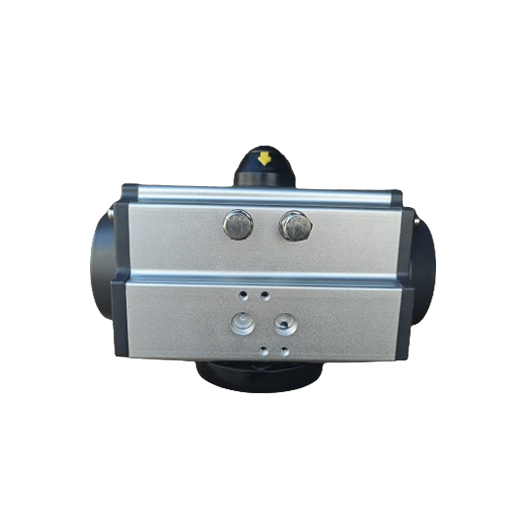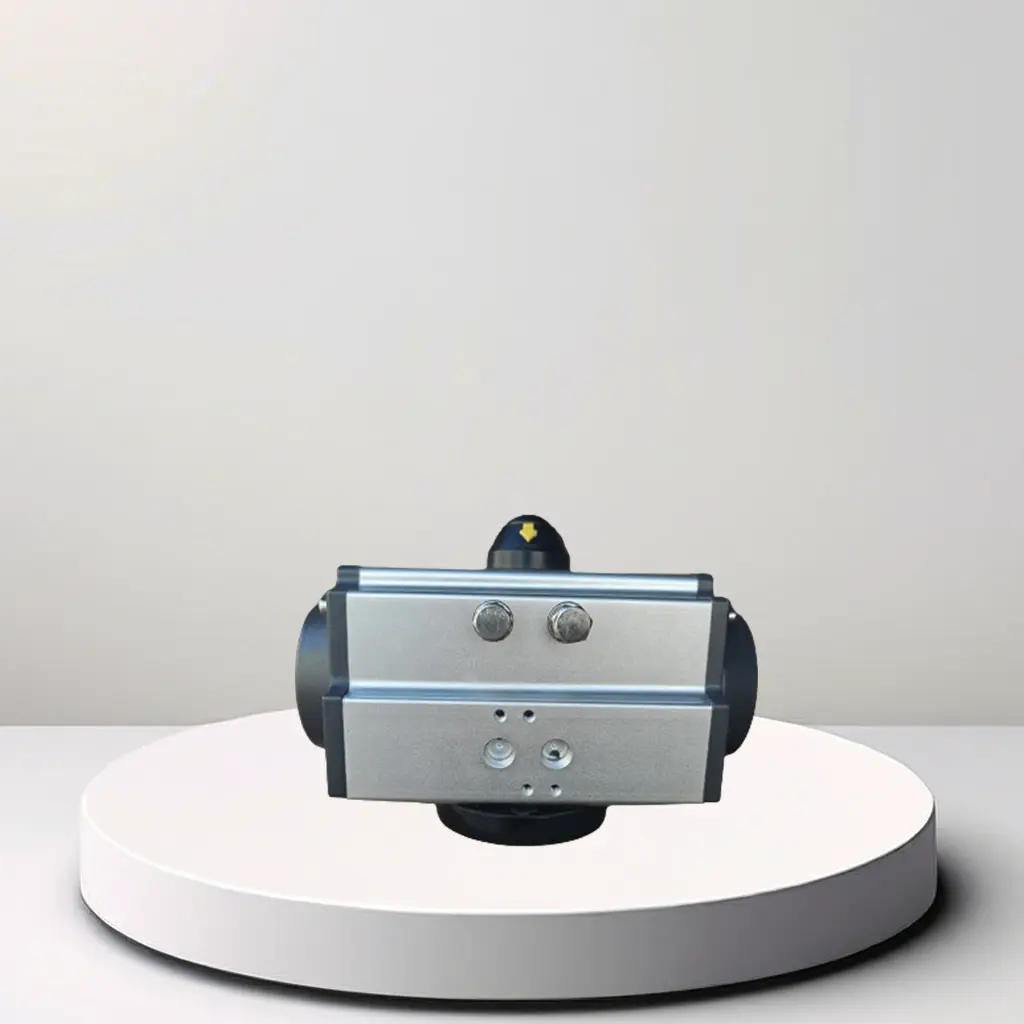Product Description
Pneumatic actuators are mechanical devices that use compressed air to create motion, converting air pressure into mechanical force. They are essential components in many automated systems and are commonly used to control valves, dampers, and other equipment in various industrial applications. Here’s a detailed overview:
1. Types of Pneumatic Actuators:
- Linear Actuators: These actuators provide linear motion, meaning they move in a straight line. They typically use a piston inside a cylinder. When compressed air is introduced, it moves the piston back and forth, producing the linear motion required for applications such as opening or closing a valve.
- Rotary Actuators: These actuators provide rotary motion, meaning they turn around a central axis. They usually consist of a piston or vane within a cylindrical chamber. The introduction of compressed air causes the piston or vane to rotate, allowing for applications like rotating valves or turning other machinery components.
2. Components and Operation:
- Cylinder or Chamber: The main body of the actuator where the compressed air is introduced. In linear actuators, this is typically a cylinder, while in rotary actuators, it’s a cylindrical chamber.
- Piston or Vane: The moving part inside the cylinder or chamber that interacts with the compressed air. In linear actuators, it’s a piston that moves back and forth. In rotary actuators, it’s a vane or rotor that rotates.
- End Caps or Covers: These are the parts that seal the ends of the cylinder or chamber, holding the piston or vane in place and providing mounting points.
- Air Inlet/Outlet Ports: The connections where compressed air enters and exits the actuator. They are used to control the movement of the piston or vane by adjusting the air pressure.
- Positioning System: Some pneumatic actuators include sensors or feedback systems to monitor and control the position of the piston or vane, ensuring accurate operation.
3. Advantages:
- Fast Response Time: Pneumatic actuators can quickly move and adjust due to the high-speed nature of compressed air, making them suitable for applications requiring rapid actuation.
- Simplicity and Reliability: They have a simple design with fewer moving parts compared to electric actuators, which often makes them more reliable and easier to maintain.
- Cost-Effectiveness: Generally, pneumatic actuators are less expensive than electric or hydraulic actuators, making them a cost-effective choice for many applications.
- Robustness: They are capable of operating in harsh environments, including those with extreme temperatures, high humidity, and potential exposure to dust and debris.
- Safety: Pneumatic actuators are less likely to cause electrical hazards, making them safer for use in explosive or hazardous environments.
4. Applications:
- Industrial Automation: Used in manufacturing processes to control machinery, conveyors, and robotic arms.
- Valve Control: Commonly used to operate control valves, such as those found in water treatment plants, chemical processing facilities, and HVAC systems.
- Packaging: Employed in packaging lines for tasks like opening and closing containers or moving products along the line.
- Material Handling: Used to control the movement of materials in bulk handling systems, including loading and unloading operations.
- Food and Beverage: Applied in processing and packaging lines to handle food products, where cleanliness and reliability are crucial.
5. Installation and Maintenance:
- Installation: Pneumatic actuators are installed by connecting them to a compressed air supply and ensuring proper alignment with the equipment they control. The actuator must be securely mounted and connected to the necessary control systems.
- Maintenance: Regular maintenance involves checking for leaks, ensuring that the compressed air supply is clean and dry, and inspecting moving parts for wear and tear. Proper maintenance ensures the actuator remains in good working condition and extends its lifespan.
6. Limitations:
- Air Supply Dependency: Pneumatic actuators require a constant supply of compressed air to operate. Any interruption in the air supply can lead to a loss of function.
- Energy Consumption: Compressed air systems can be energy-intensive, potentially leading to higher operational costs compared to other types of actuators.
- Accuracy: While pneumatic actuators are generally precise, they may not provide the same level of accuracy and control as electric actuators, especially in applications requiring fine adjustments.
In summary, pneumatic actuators are efficient devices used to convert compressed air into mechanical motion. They are favored for their speed, simplicity, and durability, making them suitable for a wide range of industrial and commercial applications.

